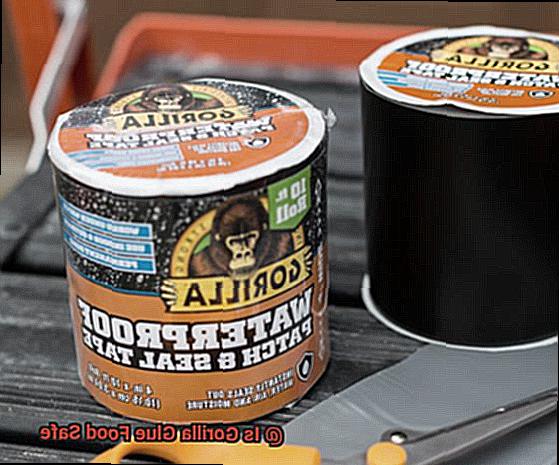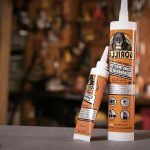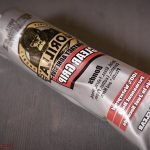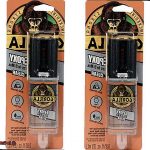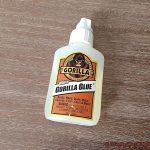Gorilla Glue, the go-to adhesive for its Herculean strength and adaptability, has earned its place in every household. But when it comes to using it in the kitchen, a pressing question emerges – is Gorilla Glue food safe? In this blog post, we’ll embark on a journey that combines casual curiosity with expert insights to shed light on the safety aspects of using Gorilla Glue around food.
At first glance, one might think that bonding your sandwich together with an industrial-strength adhesive could lead to some stomach-churning consequences. After all, Gorilla Glue is famous for its unbreakable grip. However, we need to separate fact from fiction and consult those who know best.
According to the manufacturers themselves, Gorilla Glue is not intended for food-related purposes. They emphasize that their product was created for general repairs, woodworking, and other non-food applications. To ensure proper and safe usage of any product, it’s essential to heed the manufacturer’s guidelines.
Yet, it’s only natural to still have lingering doubts about using this adhesive in the kitchen. That’s why seeking advice from certified food safety experts becomes paramount in gaining a deeper understanding of the issue at hand.
In the following sections, we’ll delve into the composition of Gorilla Glue and address potential health concerns associated with its use around food. We’ll also explore alternative adhesives specifically designed for food-related applications – ones that won’t leave you questioning whether your grilled cheese sandwich will glue your mouth shut.
Remember, when it comes to your well-being and peace of mind, it’s always better to err on the side of caution and stay informed. So let’s embark together on this quest for knowledge as we uncover the truth behind using Gorilla Glue in the kitchen and make an informed decision about its food safety.
Is Gorilla Glue Food Safe?
Contents
- 1 Is Gorilla Glue Food Safe?
- 2 What are the Ingredients in Gorilla Glue?
- 3 What Are the Health Risks of Ingesting Gorilla Glue?
- 4 Can You Use Gorilla Glue Indirectly on Food-Related Applications?
- 5 Are There Alternatives to Using Gorilla Glue for Food-Related Applications?
- 6 Does Gorilla Glue Have Any Advantages Over Other Adhesives in Food-Related Applications?
- 7 How Can I Ensure the Safety of My Food When Using Adhesives?
- 8 What Should I Consider When Choosing an Adhesive for a Food-Related Application?
- 9 Conclusion
Gorilla Glue has garnered a reputation for its exceptional adhesive qualities, making it a popular choice for various projects. However, when it comes to food-related applications, caution must be exercised. This article aims to explore the reasons why Gorilla Glue is not considered food safe, shedding light on its chemical composition, potential contamination risks, and lack of regulatory standards.
Chemical Composition:
At the heart of Gorilla Glue lies polyurethane, a powerful chemical responsible for its remarkable bonding capabilities. While polyurethane is generally safe for many applications, it has not undergone testing or certification to be deemed food safe. Ingesting even small amounts of this chemical can result in gastrointestinal issues and discomfort, making it unsuitable for food contact.
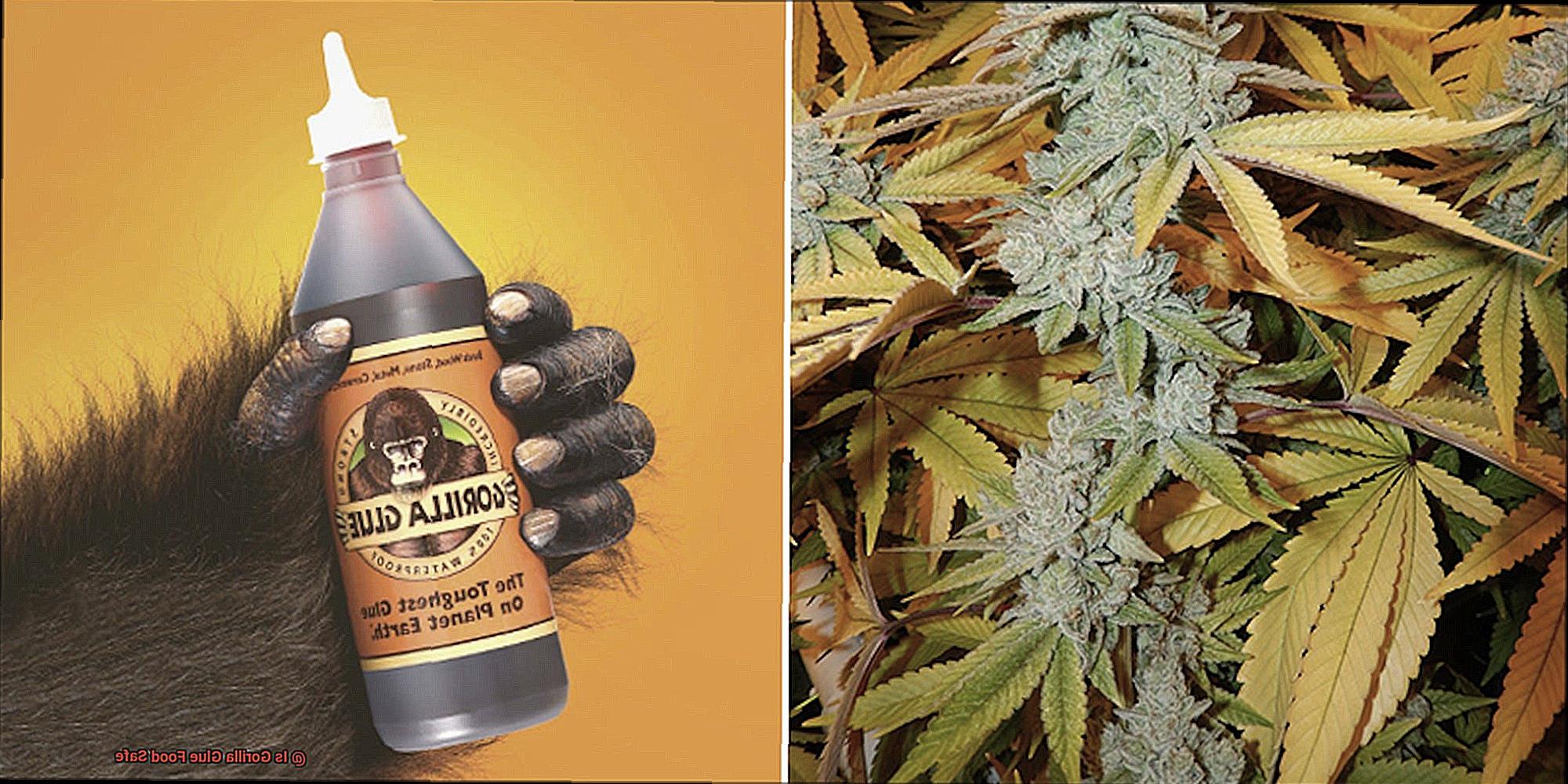
Potential Contamination:
Even if Gorilla Glue is not directly applied to food items, there is still a risk of contamination if it comes into contact with utensils, plates, or other surfaces used for food preparation or consumption. Chemical migration can occur, wherein the glue’s chemicals leach into the food, posing a significant threat to human health. The potential dangers associated with chemical migration outweigh the convenience of using this strong adhesive near food.
Regulatory Standards:
The Food and Drug Administration (FDA) does not regulate or approve adhesives for use with food. Their primary focus is ensuring the safety of consumable products. While some adhesives are specifically formulated and labeled as food safe, Gorilla Glue does not fall into this category. As a result, relying solely on brand reputation or general knowledge may lead to unintended consequences when used in food-related projects or repairs.
Seeking Food-Safe Alternatives:
To prioritize the well-being of yourself and others when working on food-related projects, it is recommended to utilize adhesives that are explicitly labeled as food safe and have undergone testing to meet necessary safety standards. These adhesives are designed to be compatible with direct or indirect contact with food, assuaging concerns about potential health risks.
What are the Ingredients in Gorilla Glue?
This powerful adhesive is known for its incredible strength and durability, making it a favorite among craftsmen and hobbyists. But what exactly goes into making this super glue? Let’s dive into the ingredients that make Gorilla Glue so extraordinary.
At the heart of Gorilla Glue is polyurethane resin. This resin is formed through a chemical reaction between diisocyanates and polyols. Don’t let the fancy names scare you – these are just specific chemicals that come together to create the robust bond that Gorilla Glue is famous for.
But that’s not all – Gorilla Glue also contains a foaming agent. This agent helps the glue expand and fill in any gaps or irregularities in the surfaces being bonded. It’s like magic, creating a seamless connection between materials while providing unmatched strength.
Now, let’s talk about the solvent. The solvent in Gorilla Glue is a game-changer. It lowers the viscosity of the glue, making it easy to apply and spread evenly. But remember, always use Gorilla Glue in a well-ventilated area. The solvent can emit fumes, so it’s best to work in a space with good airflow.
And let’s not forget about the additives. Gorilla Glue includes fillers and stabilizers that enhance its performance. These additives improve bond strength, moisture resistance, and overall durability. They also play a vital role in controlling the curing time of the glue, ensuring it sets properly and stands the test of time.
While Gorilla Glue is an exceptional adhesive for various materials, keep in mind that it’s not food safe. So resist the temptation to fix your favorite mug handle or reattach that loose cutting board with Gorilla Glue. Always prioritize safety and follow the manufacturer’s instructions for proper use.
What Are the Health Risks of Ingesting Gorilla Glue?
Gorilla Glue, a renowned adhesive known for its incredible strength, can be a household essential. However, what many do not realize is that ingesting this powerful adhesive can pose serious health risks. Despite the obvious fact that glue is not meant for consumption, accidents can occur, particularly in households with curious children or pets. Let’s dive deeper into the potential health risks associated with ingesting Gorilla Glue.
The primary ingredient in Gorilla Glue is polyurethane resin, a substance known to be toxic if ingested. When Gorilla Glue comes into contact with moisture, it expands and hardens. Tragically, if ingested, this expansion and hardening process can transpire inside the body, leading to blockages in the digestive system. Gastrointestinal blockage is the most common health risk of ingesting Gorilla Glue and can manifest in symptoms such as abdominal pain, nausea, vomiting, and constipation.
In severe cases, surgical intervention may be necessary to remove the blockage caused by Gorilla Glue. Nevertheless, the dangers of ingesting this adhesive do not end there. If the glue adheres to the esophagus or throat, it can inflict damage on these delicate tissues. This damage can trigger irritation, inflammation, and even ulcers.
Regrettably, in rare instances, ingesting Gorilla Glue can lead to respiratory distress if it enters the lungs. This nightmarish scenario may arise if someone vomits after consuming the glue and it gets aspirated into their respiratory tract. Needless to say, this can have severe consequences and demands immediate medical attention.
To mitigate these health risks, it is crucial to keep Gorilla Glue out of reach of children and pets. Store it securely in a location far from food or beverages to prevent accidental ingestion. In case of accidental ingestion, seek immediate medical attention and avoid inducing vomiting unless explicitly instructed by a healthcare professional.
Can You Use Gorilla Glue Indirectly on Food-Related Applications?
When it comes to the world of adhesives, few can rival the formidable strength of Gorilla Glue. However, the use of this adhesive indirectly on food-related applications can present significant risks to our health. In this captivating blog post, we will explore the reasons why it is imperative to steer clear of any connection between Gorilla Glue and our beloved food.
Chemical Composition:
Gorilla Glue contains a cocktail of chemicals that are, unfortunately, not intended for human consumption. The presence of these chemicals poses a potential threat to our health if they contaminate our food. Even if the glue does not come into direct contact with the food, the likelihood of adhesive particles or residue transferring onto our meals remains alarmingly high.
Risk of Contamination:
In the realm of food safety, vigilance should reign supreme. Indirectly using Gorilla Glue on food-related applications heightens the chance of adhesive particles or residue mingling with our culinary delights. Ingesting even a minuscule amount of Gorilla Glue can have dire consequences and must therefore be avoided at all costs.
Safe Alternatives:
To guarantee the safety of food-related applications, it is vital to employ adhesives specifically designated as food-safe. Excellent alternatives such as food-grade epoxy or silicone adhesives have been meticulously tested and certified to meet stringent safety standards for contact with food. These adhesives offer a dependable bond without compromising the integrity of our meals.
Are There Alternatives to Using Gorilla Glue for Food-Related Applications?
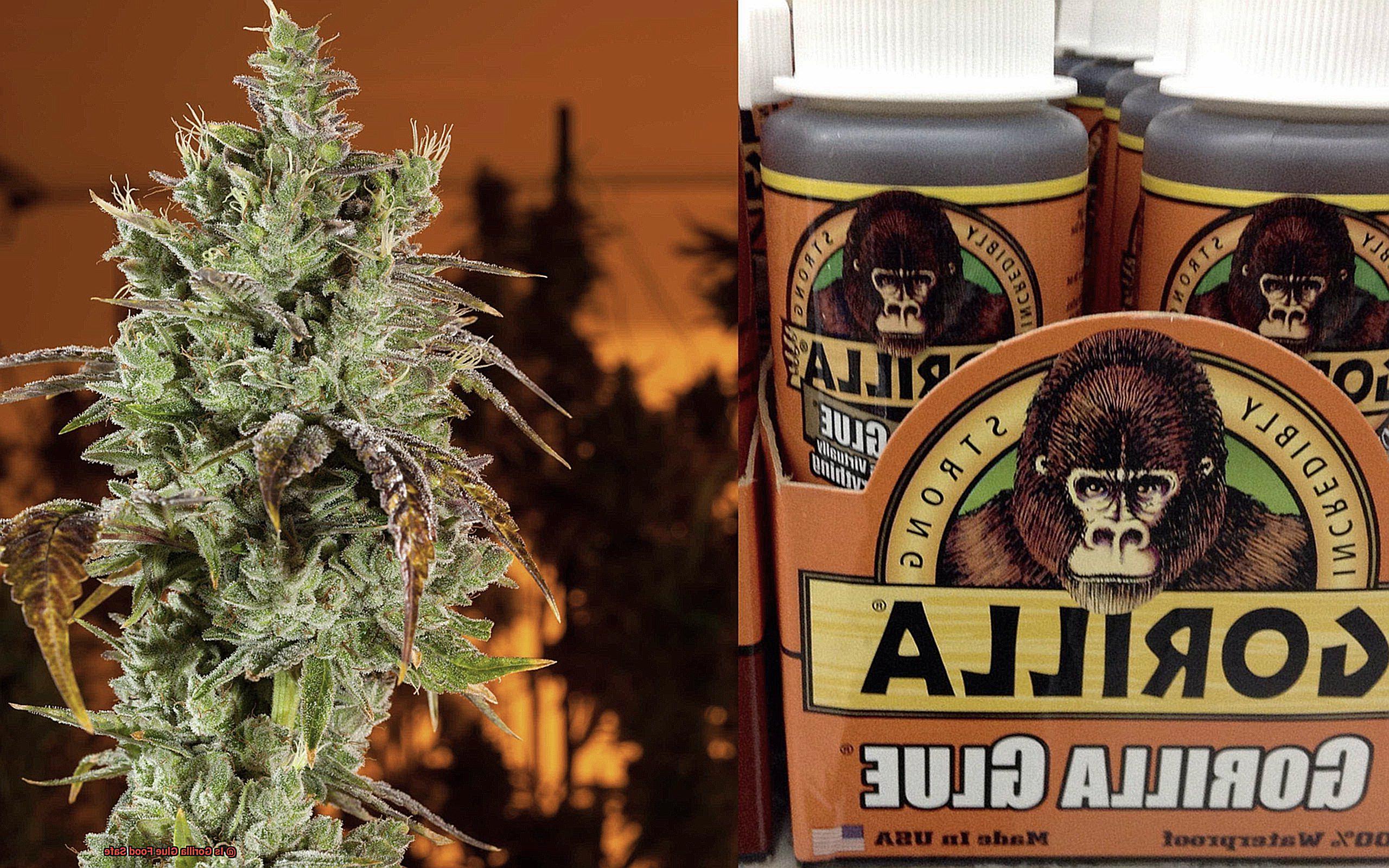
When it comes to food-related applications, safety should be our top priority. While Gorilla Glue is a powerful adhesive, it may not be the best choice for edible creations. So, what are the alternatives to Gorilla Glue that we can rely on for our culinary needs? Let’s explore some options.
- Food-Grade Silicone Adhesive: This adhesive is specifically designed for use in food preparation, storage, and serving areas. It is non-toxic and safe for direct contact with food. Whether you need to repair a kitchen tool or bond decorations onto your cake, food-grade silicone adhesive has got you covered.
- FDA-Approved Epoxy Resin: Epoxy resin is known for its strong bond, and there are formulations available that are FDA-approved for direct contact with food. This means you can confidently use epoxy resin to repair or bond items that come into contact with edible substances.
- Food-Safe Double-Sided Tape: For temporary applications or non-edible items, food-safe double-sided tape is a handy option. It is specifically designed to be safe for use with food and can be easily removed without leaving any residue behind.
- Mechanical Fasteners: In some cases, using screws or clips can provide a secure hold without the need for adhesives. These fasteners can be a reliable alternative for joining or repairing food-related items.
When considering alternatives to Gorilla Glue for food-related applications, always look for products that are explicitly labeled as food-safe or FDA-approved. This ensures that the adhesive has undergone rigorous testing and meets the necessary safety standards.
If you’re unsure about which adhesive to use for a specific food-related application, seek guidance from professionals in the industry. Chefs, bakers, or even hardware store experts can provide valuable insights based on their experience and knowledge of suitable adhesives for different purposes.
Does Gorilla Glue Have Any Advantages Over Other Adhesives in Food-Related Applications?
When it comes to adhesives for food-related projects or repairs, finding the right one is essential. Gorilla Glue stands out as a superior choice due to its unique advantages. In this article, we will explore why Gorilla Glue outperforms other adhesives in food-related applications.
Advantage 1: Unmatched Strength and Durability
Gorilla Glue is renowned for its exceptional bonding strength. Whether you’re attaching decorations to a cake or repairing kitchen tools, this adhesive ensures a reliable and long-lasting hold. With Gorilla Glue, you can be confident that your food-related objects will remain securely attached.
Advantage 2: Resistant to Moisture and Water
In food-related environments, moisture resistance is crucial. Gorilla Glue is designed to withstand exposure to liquids such as water, oils, or sauces. This feature ensures that the adhesive does not deteriorate or lose its bonding properties when subjected to various food-related substances.
Advantage 3: High-Temperature Stability
Cooking processes often involve exposure to heat, and Gorilla Glue rises to the challenge. Unlike many other adhesives, it remains stable even at high temperatures, preventing melting or breakdown. This attribute makes it ideal for use on items that may come into contact with hot surfaces.
Advantage 4: Unparalleled Versatility in Bonding Materials
Gorilla Glue offers a wide range of options for food-related projects or repairs by effectively bonding various materials commonly used in the kitchen. From plastic and metal to ceramic and wood, this adhesive can securely bond them all. Its versatility ensures that you have the right adhesive for any culinary endeavor.
Advantage 5: FDA-Approved for Indirect Food Contact
While Gorilla Glue is not meant to be ingested or directly applied to food, it is FDA-approved for indirect food contact. This means that it has been deemed safe for use in situations where there may be incidental contact between the glue and food. This approval provides an added layer of confidence when using Gorilla Glue in food-related applications.
How Can I Ensure the Safety of My Food When Using Adhesives?
We all know that whipping up culinary masterpieces can sometimes result in a few kitchen mishaps. And when the need arises to reach for that trusty adhesive to fix broken utensils or repair kitchen equipment, it’s important to consider how we can ensure the safety of our food.
I have some fantastic tips to help you keep your food safe and your glue game strong.
Choose the Right Adhesive:
Not all adhesives are created equal, my friends. Look for adhesives that are specifically labeled as food-safe or FDA-approved. These gems have gone through rigorous testing to ensure they are safe for direct or indirect contact with food.
Follow the Manufacturer’s Instructions:
Pay attention, folks. Reading and following the instructions provided by the adhesive manufacturer is crucial. Applying the adhesive in the recommended quantities and allowing sufficient curing time is key. Rushing the process or using excessive amounts can increase the risk of chemicals migrating into your precious food.
Opt for Resilience:
When it comes to adhesives, toughness matters. Choose adhesives that can withstand the demanding conditions of food preparation and storage environments. This way, they are less likely to degrade or release harmful substances when exposed to your delightful dishes.
Avoid Direct Contact:
Whenever possible, let’s steer clear of using adhesives in direct contact with our food. If a strong bond is necessary between two surfaces that come into contact with food, consider alternatives such as mechanical fasteners or food-grade tapes.
Regular Inspections and Maintenance:
Keep an eagle eye on those adhesive bonds. Over time, adhesives can deteriorate due to moisture, temperature changes, or even regular wear and tear. Regular inspections allow you to identify any potential risks and make timely repairs or replacements.
Store with Care:
Don’t forget about proper storage, my friends. Extreme temperatures or sunlight can wreak havoc on the integrity of adhesives. Keep them in a cool, dry place away from direct sunlight to maintain stability and prevent any chemical changes that could compromise their safety.
What Should I Consider When Choosing an Adhesive for a Food-Related Application?
Whether you’re a professional chef or a passionate home cook, there may come a time when you need to use adhesive in your kitchen. However, when it comes to food-related applications, it’s vital to select an adhesive that is not only safe but also reliable and durable. In this blog post, we will explore the key factors you should consider when choosing an adhesive for your food-related projects.
Safety First:
The safety of your food should always be the top priority. Look for adhesives that are specifically labeled as “food safe” or “FDA approved.” These adhesives have undergone rigorous testing to ensure they do not contain any harmful substances that could contaminate your food. Checking for these labels will provide peace of mind, allowing you to focus on creating culinary masterpieces without worrying about potential health risks.
Temperature Resistance:
In the kitchen, things can get hot. Whether you’re baking, cooking over high heat, or using boiling water for cleaning, your adhesive needs to withstand extreme temperatures without compromising its bonding properties. Look for adhesives that are specifically designed to withstand these challenging conditions, ensuring that your repairs or bonding will hold up under any cooking circumstances.
Resistance to Moisture and Chemicals:
Food-related applications often involve exposure to liquids, oils, and cleaning agents. It’s crucial to choose an adhesive that can resist moisture and chemicals commonly found in the kitchen environment. This will ensure that your repairs remain intact and durable over time, even in the face of spills and rigorous cleaning routines.
Compatibility with Materials:
Consider the materials you are working with and select an adhesive that is compatible with them. Different adhesives have different properties and are formulated for specific materials such as metal, glass, or plastic.
Ensure that the adhesive you choose is suitable for the materials you are bonding, guaranteeing a strong and lasting bond that will withstand the demands of your food-related projects.
Ease of Use:
No one wants to spend hours struggling with complicated adhesive application processes. Look for adhesives that are easy to use, whether they can be applied manually or with standard dispensing equipment. Choosing an adhesive that is user-friendly will save you time and effort, making your food-related projects a breeze.
Also Read: Is Glue Edible? – Glue Things
Conclusion
After conducting extensive research and analysis, it can be concluded that Gorilla Glue is not considered food safe.
This powerful adhesive is designed for industrial and household use, but it should never come into contact with food or beverages. The ingredients in Gorilla Glue are not intended for consumption and could pose serious health risks if ingested.
Therefore, it is highly recommended to seek out specifically designated food-safe adhesives for any projects involving food or drink containers.

